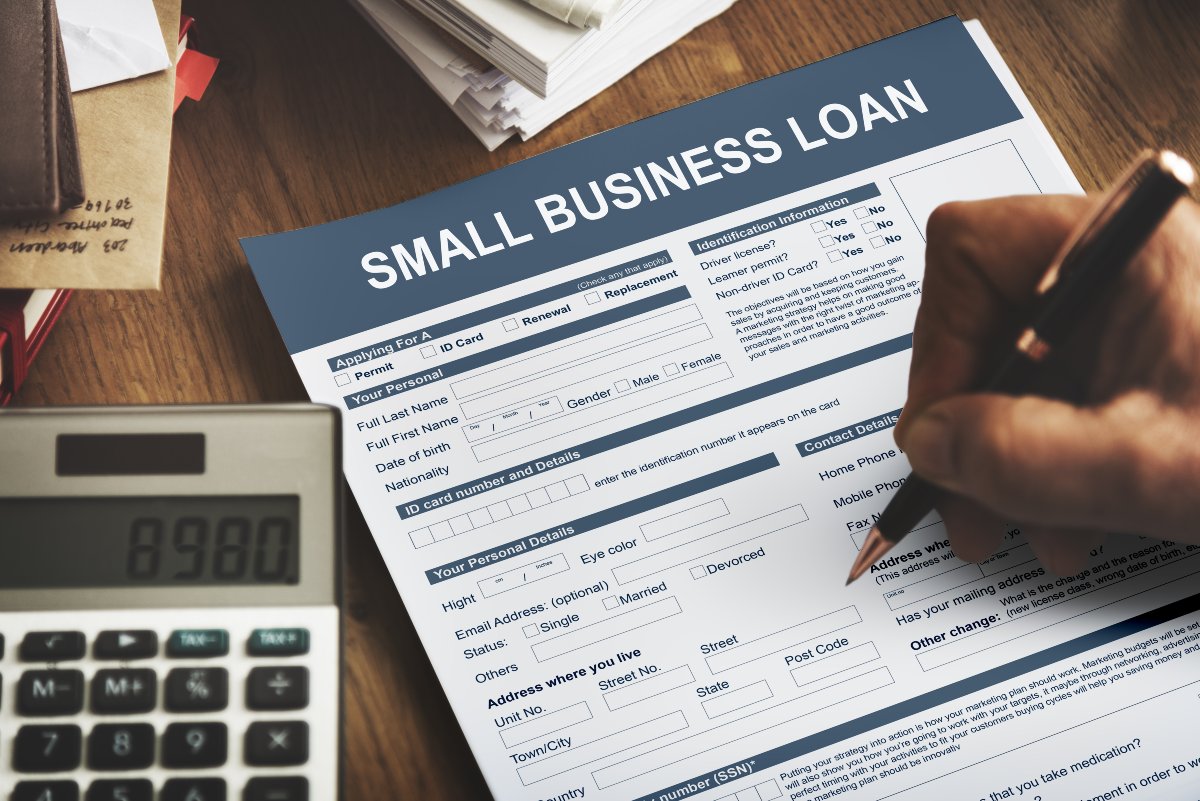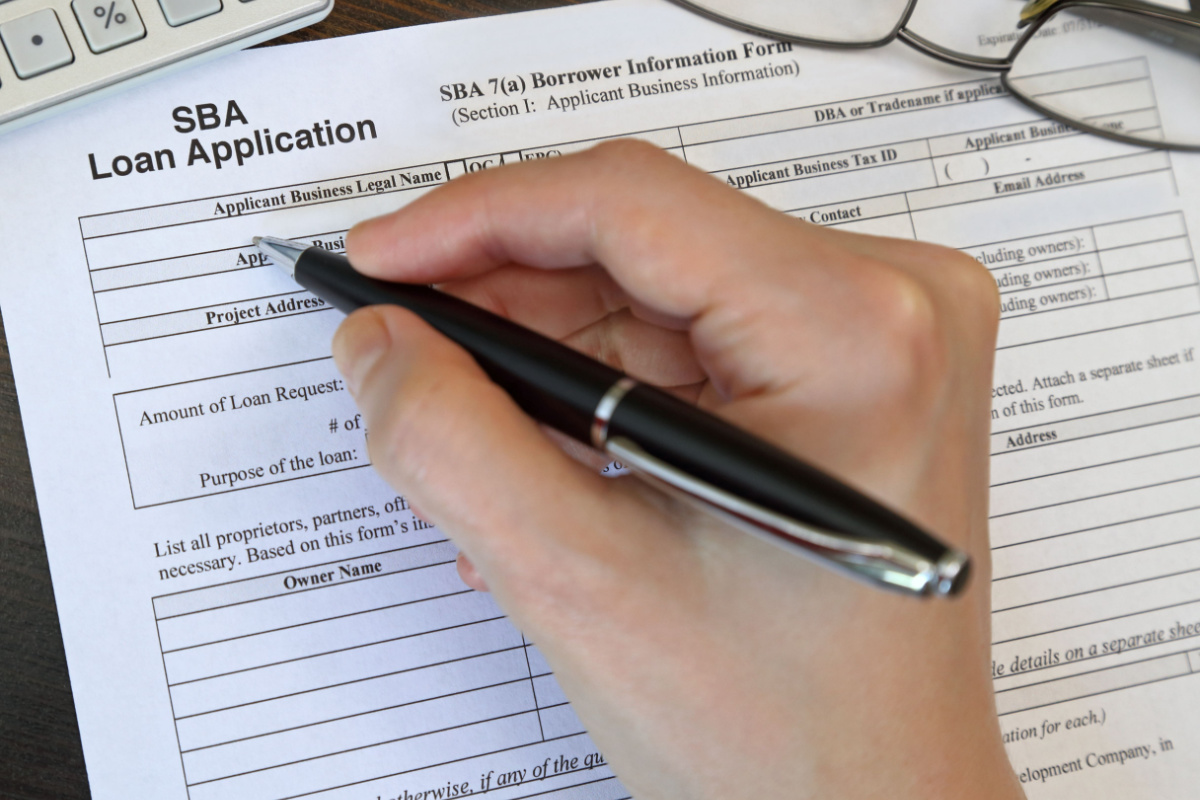What is a Microloan and How Does it Work
Date published: January 2, 2023
Microloans can help you fund your small business, startup, or nontraditional business which might struggle to obtain a small business loan. Keep reading to learn more about the terms, conditions, and requirements of microloans.
Loan Advice
The world of small business funding is full of opportunities, particularly when microloans offer an accessible alternative to traditional loans. Microloans can offer a lifeline to startups and small businesses searching for that much-needed capital.
Request Funding Today*
By clicking "Get Started", I consent and agree to the
Privacy Policy and
Terms of Site Use.
*By filling out the form above, you will be routed to Lendza’s funding request form.
So, what exactly are microloans, how do microloans work, and how can they catapult your venture to the next level? Keep reading to unpack the eligibility requirements, pros and cons, and other essentials that could make a microloan your ticket to entrepreneurial success.
What is a Microloan?
A microloan is a small, short-term loan designed to provide financial support to startups, small businesses, or individuals who may be struggling to obtain traditional forms of credit.
With microloans, borrowers can request between $500 and $50,000. These loans usually come with flexible repayment terms between three months and seven years and interest rates between 8% to 13%. However, loan amounts, terms, and interest rates are subject to change based on the lender and the business’s eligibility.
 Microloans can come with more lenient qualification criteria than traditional business loans, making them an attractive option for small businesses and startups that may not meet stricter credit requirements. In fact, microloans have helped over 200 million business owners as of 2020.
Microloans can come with more lenient qualification criteria than traditional business loans, making them an attractive option for small businesses and startups that may not meet stricter credit requirements. In fact, microloans have helped over 200 million business owners as of 2020.
When to Use a Microloan
Microloans can generally be used for a variety of business expenses, though some lenders may impose restrictions on fund usage as a loan condition. There are dozens of reasons someone may be looking for a microloan, including:
- Launching a Startup: Need initial capital for inventory or equipment? A microloan can get you off the ground.
- Business Expansion: If you're looking to grow your small business but lack the cash for new hires or a larger workspace, a microloan could fill that gap.
- Seasonal Slumps: Operations don't have to grind to a halt if you're in a seasonal industry. Use a microloan to keep things running smoothly.
- Emergency Funding: A microloan can serve as a financial cushion against unexpected events like equipment failure or a sudden decrease in demand, allowing you to address immediate financial needs without jeopardizing your cash flow.
- Marketing Initiatives: Breaking into a new market or simply enhancing your marketing efforts can require a significant investment. A microloan can provide you with the funds to develop and execute a strong advertising campaign, helping you to reach new customers and increase sales.
- Product Testing: A microloan can offer the flexibility to develop prototypes, conduct market research, and gather valuable feedback from potential customers
In these cases and more, a microloan could be your strategic financial ally, allowing you to keep your business ambitions not just afloat but primed for growth.
How to Qualify for a Microloan
Qualifying for a microloan generally involves meeting certain criteria to prove your creditworthiness. Here are some of the typical qualifications for eligibility:
- Credit Score: A minimum credit score between 620 and 640 is usually required. Lenders will often check the business owner’s personal credit score and the business’s score. However, the weight that personal credit has on the application varies by lender.
- Proof of Income: Documentation such as payslips, tax returns, or bank statements is often needed to verify your ability to repay the loan.
- Business Plan: If the microloan is for a small business, a detailed business plan may be required.
- Collateral: While not often necessary, having collateral can sometimes improve your chances of getting approved.
- Revenue Requirements: Small businesses often need to demonstrate a stable revenue stream, typically with at least six to 12 months of financial history. The required minimum revenue can vary by lender but generally ranges from $25,000 to $50,000 annually.
Each lender may have additional or slightly different criteria, so it's always good to check with the specific lender for their requirements.
Pros and Cons of Microloans
Microloans can be a valuable financial tool for small business owners looking for alternative loan methods. Here's a closer look at the advantages and disadvantages of microloans.
Advantages of Microloans
Microloans can be beneficial for several key reasons:
- Accessibility: Microloans often have less stringent requirements than traditional bank loans, which can make them more accessible for a small business or entrepreneur with little or no credit history and less proof of financial viability.
- Quick Turnaround: Approval and disbursement of microloans can take as little as a few weeks, allowing borrowers to meet financial needs quicker than with traditional loans.
- Flexible Repayment Terms: Microloans often come with flexible repayment options, giving borrowers extended payment schedules that align with their business's cash flow.
- Small Loan Amounts: The small size of the loan allows for manageable repayments, which can be particularly helpful for businesses that are just starting out or have limited cash flow.
Disadvantages of Microlending
While microloans may have a lot of potential benefits, it’s important to understand the risks of taking out a microloan before making a decision:
- Collateral Requirement: If you have poor credit, the lender might require collateral as a condition of loan approval. Collateral can include the business itself, property, or equipment. If you default on the loan, the lender can repossess the collateral.
- Limited Funding: Some small businesses and startups may not qualify for large amounts. As a result, small-sum microloans may not be sufficient to cover your business needs.
- Strict Eligibility: Some lenders may limit what the microloan funds can be used for. For instance, the lender may only approve the funds for buying investment property or equipment. This may limit their usability for some businesses.
Types of Microloans to Consider
There are many types of microloans offered through various financial institutions. Here are some of the most common providers of microloans:
Peer-to-Peer Lending
Peer-to-peer (P2P) lending is a digital space where individuals can lend money directly to others without any banking middleman, essentially as a form of microloan investing. Instead of borrowing from traditional financial institutions like banks, P2P lending allows borrowers to get loans from individual investors.
 As a borrower, the process begins with detailing the loan you're seeking, specifying the amount, the purpose, and other pertinent details. Once that's done, the platform takes the responsibility of conducting personal and business financial and background checks.
As a borrower, the process begins with detailing the loan you're seeking, specifying the amount, the purpose, and other pertinent details. Once that's done, the platform takes the responsibility of conducting personal and business financial and background checks.
Loans typically range from $1,000 to $5,000 but can vary depending on the lender. Interest rates tend to be higher than traditional loan rates, ranging from 6% to nearly 36%, depending on your credit score.
Some reasons peer lending might be advantageous include:
- Direct Transactions: P2P platforms eliminate the need for traditional banking intermediaries, often streamlining the lending process.
- Potentially Lower Interest Rates: Some borrowers can secure more favorable interest rates, especially if they have a good credit score.
- Flexibility: P2P platforms often offer a range of loan amounts and terms, accommodating various borrower needs.
- Ease of Access: Digital platforms make it easy to apply for microloans online from anywhere, eliminating geographic limitations.
- Transparent Fees: P2P platforms often have clear fee structures without hidden charges.
How to Apply for a Peer-to-Peer Microloan
Navigating the world of personal finance can be challenging, but peer-to-peer platforms offer a simplified and personalized approach to securing a microloan. Here are some steps to help you get started with finding the right loan for your needs:
- Step 1: Research Platforms. Explore top peer-to-peer lenders like LendingClub, Prosper, and Funding Circle for diverse loan options and competitive rates. Ideal candidates often have good credit, low DTI, and solid income. LendingClub may be a better option for those with less-than-perfect credit. Consult user reviews and financial forums for platform insights.
- Step 2: Check Eligibility. Before diving in, make sure you meet the platform's eligibility requirements. Basic criteria often include being at least 18 years old, having a stable source of income, and maintaining a decent credit score, usually above 600. If you're not a resident, you may need a co-signer who is.
- Step 3: Prepare Financial Documents. Collect key documents before starting the application for a smoother process. This often includes your ID, proof of income like pay stubs or tax returns, and credit reports.
- Step 4: Submit Loan Application. Once your account is set up, complete the loan application form available on your dashboard. Be as detailed as possible about the purpose of your loan, whether it's for consolidating debt, funding a business idea, or handling a medical emergency.
SBA Microloans Program
The Small Business Administration (SBA) is a U.S. government agency that provides financial and educational support to entrepreneurs and small businesses. In 2022, the SBA approved roughly 62,000 loans, which amounted to $43 billion to small businesses in the U.S.
One of the financial tools it offers is the Microloans Program, designed to provide microloans for small business startups, existing small businesses, and certain nonprofit organizations.
 Approved SBA borrowers can obtain microloans of up to $50,000. The average SBA microloan is around $14,000 with a 7.5% interest rate. SBA loans are a popular financing choice among businesses for the following reasons:
Approved SBA borrowers can obtain microloans of up to $50,000. The average SBA microloan is around $14,000 with a 7.5% interest rate. SBA loans are a popular financing choice among businesses for the following reasons:
- Government-Backed: Loans come with a government guarantee, reducing the risk for lenders and potentially leading to more favorable loan terms and interest rates.
- Competitive Interest Rates: SBA loans feature competitive interest rates, ranging between 3% and 15%.
- Specialized Support: Intermediary lenders often offer business support services in addition to lending, providing borrowers with valuable resources and advice.
- Suits Smaller Needs: SBA loans can offer smaller loan amounts, making them suitable for startups, small businesses, and certain nonprofits that don't need large capital.
How to Apply for an SBA Microloan
If you’re interested in an SBA microloan, you can start the application process or get more information through your SBA District Office. Let’s walk through what the application process will typically look like
- Determine Your Eligibility. Verify if you meet the SBA microloan criteria, such as credit score, business history, and financial stability. Consult the SBA website or your local SBA District Office for details.
- Research Approved Intermediary Lenders. The SBA microloan program works by giving loans to intermediary lenders, who then lend the money to small businesses. Search the SBA's list of approved intermediary lenders and identify one or more that serve your area. Reach out to the SBA-approved intermediary lender(s) you identified earlier. Inquire about their specific application process, as it may vary from one lender to another.
- Collect Required Documentation. Prepare all required documents, such as your business plan, financial statements, tax returns, and any other paperwork the lender may require. Then, fill out the lender's application form, making sure to include all required documents. The form may be available online, or you may need to fill it out in person. Once you've filled out the application, submit your application package to the intermediary lender for review.
- Review and Wait. Your application will be reviewed by the intermediary lender and potentially by the SBA. This could take anywhere from a few days to several weeks. During this time, you may be asked to provide additional information or clarifications. You'll be notified whether your loan has been approved or denied. If approved, make sure you understand all the terms and conditions before accepting the loan.
- Receive Funds. If your loan is approved, you'll go through the closing process with the intermediary lender. This usually involves signing loan documents and setting up a repayment schedule. Once everything is finalized, the loan funds will be disbursed to you. Begin making regular payments according to the terms of your loan agreement. Keep records of all payments and communicate any difficulties to the lender as soon as possible.
SBA Microloan Eligibility Requirements
While eligibility criteria can vary depending on the intermediary lender, there are general requirements that most borrowers must meet. Below are some of the eligibility requirements for obtaining an SBA Microloan:
- Business Age: The SBA considers the age of your business and typically expects a business to be at least two years old in order to qualify for a microloan.
- Collateral: Borrowers typically must offer collateral as a personal guarantee of repayment.
- Credit Requirements: The SBA has higher credit score requirements for microloans. A score of 620 or above is preferred.
- Business Plan: Having a thorough business plan can show financial responsibility to lenders and often is a requirement when applying for a small business loan.
- Debt Limit: At the time of application, the borrower must not owe more than $50,000.
Alternative Funding Options to Consider
Beyond microloans, there are other financing methods available to budding entrepreneurs and established businesses alike. Exploring a diverse array of funding can enable a business to find the best fit for its unique financial needs and growth aspirations.
Here are some additional business financing options:
Business Line of Credit
A business line of credit is similar to a credit card – instead of getting a single disbursement, businesses are approved for a maximum amount they can borrow from as they see fit, and interest is typically only charged on the amount they utilize. Once the borrowed amount is repaid, the credit line is replenished, allowing continuous access to funds.
Business lines of credit typically have limits ranging from $1,000 to $500,000, depending on the business’s creditworthiness. The draw period is between six months to five years. Once the draw period ends, businesses often have up to 10 years to repay the amount borrowed. Finally, interest rates range from 4% to 20%. The rate can be variable, meaning it adjusts with market fluctuations or is fixed for the duration of the draw period.
Business lines of credit are a viable alternative to microloans for the following reasons:
- Flexibility: Businesses can manage their borrowing according to their needs, making it especially useful for handling unforeseen expenses or capitalizing on sudden opportunities.
- Cost-Effective: Interest is generally only paid on the drawn amount, which can result in cost savings compared to traditional loans.
- Revolve and Reuse: Once repaid, the credit becomes available again without needing a new application.
Equipment Financing
Equipment financing specifically caters to businesses that need to purchase or lease equipment. This form of financing allows businesses to secure the machinery, technology, or tools they need without depleting their cash reserves.
Often, the equipment serves as collateral for the loan, which may result in lower interest rates. However, this also comes with the disadvantage of losing the equipment if the business defaults on the loan.
Typically, equipment financing covers 80% to 100% of the equipment’s cost. So, if a piece of machinery costs $100,000, a business might receive a loan amount of $80,000 to $100,000.The loan term usually aligns with the equipment's expected lifespan, ranging from two to seven years. Some loans might even extend to 10 years for more durable equipment.
 The interest rates for equipment financing typically vary between 6% to 9%. However, rates can be lower or higher based on the business's creditworthiness and the lender's terms.
The interest rates for equipment financing typically vary between 6% to 9%. However, rates can be lower or higher based on the business's creditworthiness and the lender's terms.
If your business needs financing specifically for equipment, this funding option can be a better alternative than microloans for the following reasons:
- Dedicated Use: The funds are earmarked for equipment purchases, ensuring that the money is utilized for business growth.
- Potential Tax Benefits: Depending on the jurisdiction, equipment financing might allow for tax write-offs or depreciation benefits.
- Preserve Cash Flow: By financing equipment, businesses can preserve their working capital for other operational expenses.
Microloan Wrap Up
Microloans can be a helpful financial resource for small businesses that face challenges in getting traditional loans. Unlike traditional loans, which often have stringent requirements that are out of reach for fledgling enterprises, microloans may offer easier qualification criteria and more flexible repayment terms.
Microloans can be particularly useful for businesses that need to invest in inventory, equipment, or even marketing initiatives to reach new customers. By taking advantage of microloan opportunities, you are not merely securing funds – you're also investing in the future success and scalability of your business.
Frequently Asked Questions on Microloans
Still curious about how microloans work? Here are some common questions and answers about this funding option:
Are All Businesses Eligible for a Microloan?
Some types of businesses may not be eligible to receive a microloan. For instance, companies selling age-restricted products, such as tobacco and alcohol, may not qualify. However, eligibility may vary by lender, so be sure to check with specific financers for exact eligibility requirements.
Which Businesses Benefit Most From Microloans?
Typically, businesses get the most out of a microloan when they:
- Need small-sum financing
- Have limited or poor credit
- Want to build credit
- Are a startup or owned by a first-time entrepreneur
What Can a Microloan Be Used For?
Microloans can be used to finance daily business expenses, inventory, equipment, furniture, machinery, and wages. The funds can often be used for other business-related expenses as well, such as marketing and advertising. However, specific limitations may vary by lender.
Is There a Minimum Credit Score Requirement?
Each lender will set its own credit score requirements. Typically, you will need a score of at least 650. However, some lenders may be willing to work with individuals with less-than-perfect credit.
Can a Microloan Help Build Business Credit?
Yes. Many lenders report microloan payments to the major credit bureaus. As a result, timely payments will reflect positively on your credit report, boosting your rating.
Ethan James is an experienced Financial Writer at Lendza with over a decade of experience.
 Microloans can come with more lenient qualification criteria than traditional business loans, making them an attractive option for small businesses and startups that may not meet stricter credit requirements. In fact, microloans have helped over 200 million business owners as of 2020.
Microloans can come with more lenient qualification criteria than traditional business loans, making them an attractive option for small businesses and startups that may not meet stricter credit requirements. In fact, microloans have helped over 200 million business owners as of 2020.  As a borrower, the process begins with detailing the loan you're seeking, specifying the amount, the purpose, and other pertinent details. Once that's done, the platform takes the responsibility of conducting personal and business financial and background checks.
As a borrower, the process begins with detailing the loan you're seeking, specifying the amount, the purpose, and other pertinent details. Once that's done, the platform takes the responsibility of conducting personal and business financial and background checks.  Approved SBA borrowers can obtain microloans of up to $50,000. The average SBA microloan is around $14,000 with a 7.5% interest rate. SBA loans are a popular financing choice among businesses for the following reasons:
Approved SBA borrowers can obtain microloans of up to $50,000. The average SBA microloan is around $14,000 with a 7.5% interest rate. SBA loans are a popular financing choice among businesses for the following reasons:  The interest rates for equipment financing typically vary between 6% to 9%. However, rates can be lower or higher based on the business's creditworthiness and the lender's terms.
The interest rates for equipment financing typically vary between 6% to 9%. However, rates can be lower or higher based on the business's creditworthiness and the lender's terms.